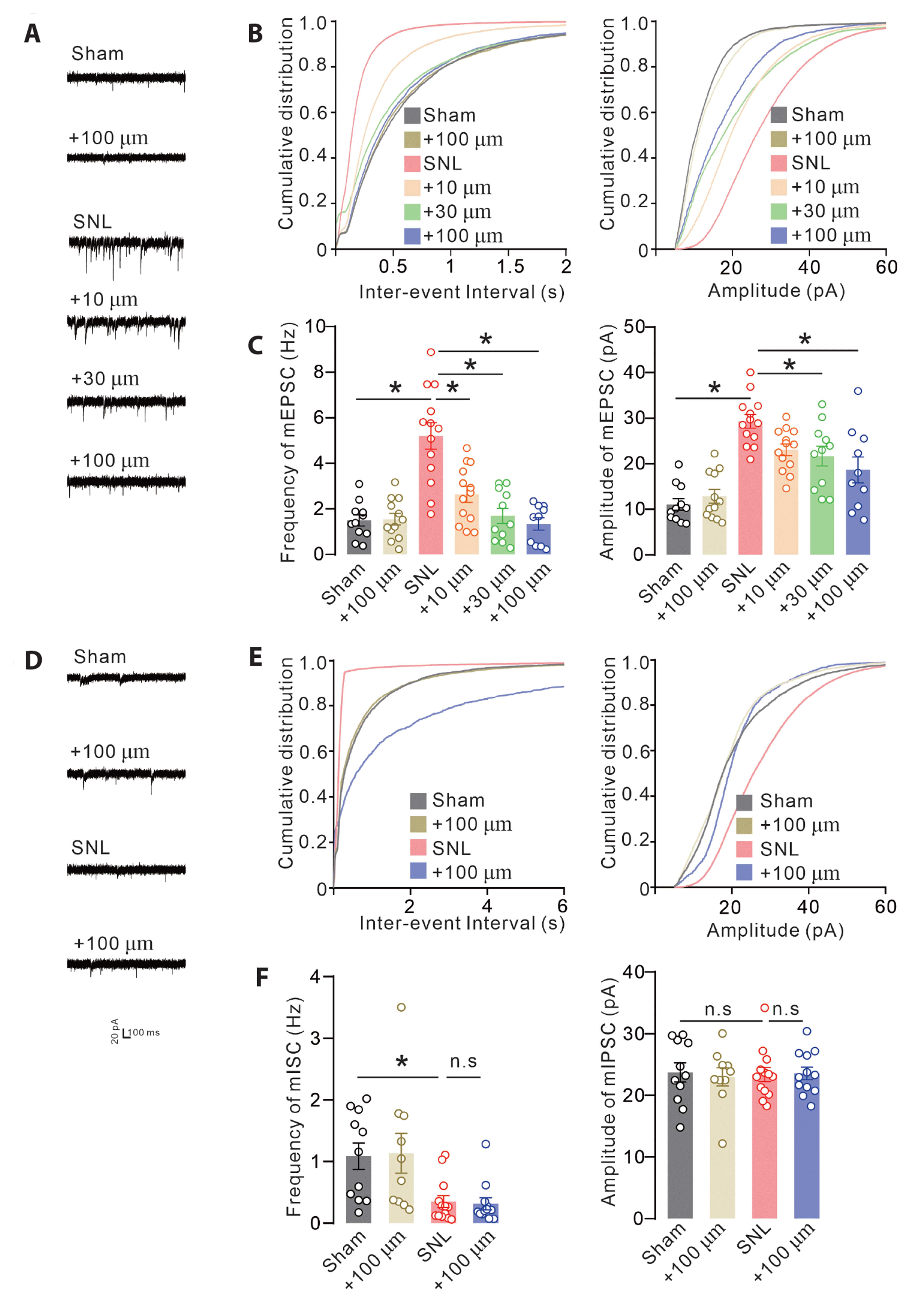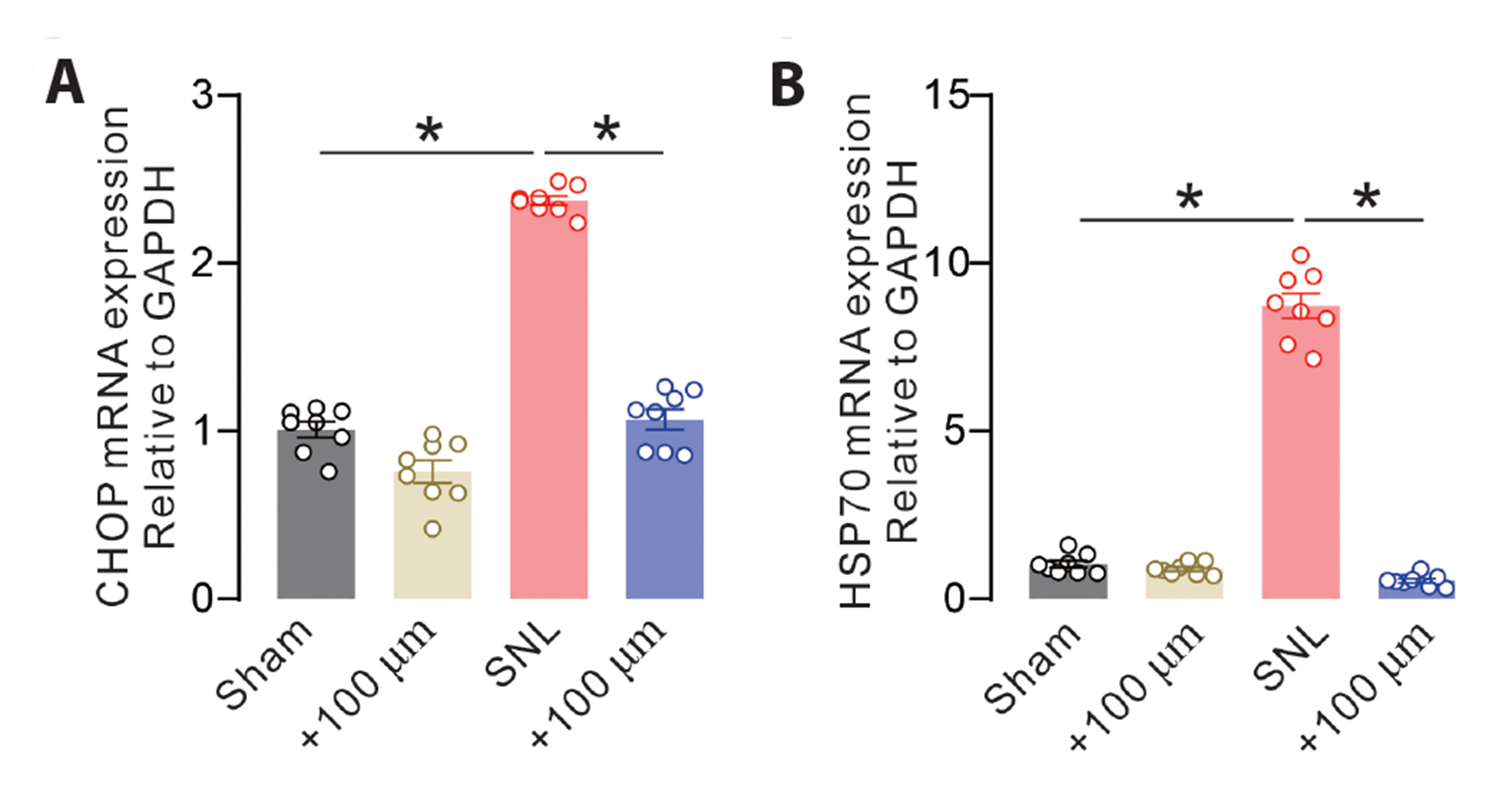1. Kim YS, Chu Y, Han L, Li M, Li Z, LaVinka PC, Sun S, Tang Z, Park K, Caterina MJ, Ren K, Dubner R, Wei F, Dong X. 2014; Central terminal sensitization of TRPV1 by descending serotonergic facilitation modulates chronic pain. Neuron. 81:873–887. DOI:
10.1016/j.neuron.2013.12.011. PMID:
24462040. PMCID:
PMC3943838. PMID:
https://www.scopus.com/inward/record.uri?partnerID=HzOxMe3b&scp=84896700036&origin=inward.
17. Zhang XY, Peng SY, Shen LP, Zhuang QX, Li B, Xie ST, Li QX, Shi MR, Ma TY, Zhang Q, Wang JJ, Zhu JN. 2020; Targeting presynaptic H3 heteroreceptor in nucleus accumbens to improve anxiety and obsessive-compulsive-like behaviors. Proc Natl Acad Sci U S A. 117:32155–32164. DOI:
10.1073/pnas.2008456117. PMID:
33257584. PMCID:
PMC7749329. PMID:
https://www.scopus.com/inward/record.uri?partnerID=HzOxMe3b&scp=85098470950&origin=inward.
20. Chopra S, Giovanelli P, Alvarado-Vazquez PA, Alonso S, Song M, Sandoval TA, Chae CS, Tan C, Fonseca MM, Gutierrez S, Jimenez L, Subbaramaiah K, Iwawaki T, Kingsley PJ, Marnett LJ, Kossenkov AV, Crespo MS, Dannenberg AJ, Glimcher LH, Romero-Sandoval EA, et al. 2019; IRE1α-XBP1 signaling in leukocytes controls prostaglandin biosynthesis and pain. Science. 365:eaau6499. DOI:
10.1126/science.aau6499. PMID:
31320508. PMID:
https://www.scopus.com/inward/record.uri?partnerID=HzOxMe3b&scp=85070059028&origin=inward.
32. van Vliet AR, Giordano F, Gerlo S, Segura I, Van Eygen S, Molenberghs G, Rocha S, Houcine A, Derua R, Verfaillie T, Vangindertael J, De Keersmaecker H, Waelkens E, Tavernier J, Hofkens J, Annaert W, Carmeliet P, Samali A, Mizuno H, Agostinis P. 2017; The ER stress sensor PERK coordinates ER-plasma membrane contact site formation through interaction with Filamin-A and F-actin remodeling. Mol Cell. 65:885–899.e6. DOI:
10.1016/j.molcel.2017.01.020. PMID:
28238652. PMID:
https://www.scopus.com/inward/record.uri?partnerID=HzOxMe3b&scp=85013498608&origin=inward.
33. Gorudko IV, Sokolov AV, Shamova EV, Grudinina NA, Drozd ES, Shishlo LM, Grigorieva DV, Bushuk SB, Bushuk BA, Chizhik SA, Cherenkevich SN, Vasilyev VB, Panasenko OM. 2013; Myeloperoxidase modulates human platelet aggregation via actin cytoskeleton reorganization and store-operated calcium entry. Biol Open. 2:916–923. DOI:
10.1242/bio.20135314. PMID:
24143278. PMCID:
PMC3773338. PMID:
https://www.scopus.com/inward/record.uri?partnerID=HzOxMe3b&scp=84979266672&origin=inward.
38. Wang QW, Lu SY, Liu YN, Chen Y, Wei H, Shen W, Chen YF, Fu CL, Wang YH, Dai A, Huang X, Gage FH, Xu Q, Yao J. 2020; Synaptotagmin-7 deficiency induces mania-like behavioral abnormalities through attenuating GluN2B activity. Proc Natl Acad Sci U S A. 117:31438–31447. Erratum in:
Proc Natl Acad Sci U S A. 2021;118:e2111933118. DOI:
10.1073/pnas.2016416117. PMID:
33229564. PMCID:
PMC7733786. PMID:
https://www.scopus.com/inward/record.uri?partnerID=HzOxMe3b&scp=85097574845&origin=inward.
39. Chen J, Li L, Chen SR, Chen H, Xie JD, Sirrieh RE, MacLean DM, Zhang Y, Zhou MH, Jayaraman V, Pan HL. 2018; The α2δ-1-NMDA receptor complex is critically involved in neuropathic pain development and gabapentin therapeutic actions. Cell Rep. 22:2307–2321. Erratum in:
Cell Rep. 2022;38:110308. DOI:
10.1016/j.celrep.2018.02.021. PMID:
29490268. PMCID:
PMC5873963. PMID:
https://www.scopus.com/inward/record.uri?partnerID=HzOxMe3b&scp=85042589748&origin=inward.
40. Binning W, Hogan-Cann AE, Yae Sakae D, Maksoud M, Ostapchenko V, Al-Onaizi M, Matovic S, Lu WY, Prado MAM, Inoue W, Prado VF. 2020; Chronic hM3Dq signaling in microglia ameliorates neuroinflammation in male mice. Brain Behav Immun. 88:791–801. DOI:
10.1016/j.bbi.2020.05.041. PMID:
32434046. PMID:
https://www.scopus.com/inward/record.uri?partnerID=HzOxMe3b&scp=85085033533&origin=inward.
46. Zhang SB, Lin SY, Liu M, Liu CC, Ding HH, Sun Y, Ma C, Guo RX, Lv YY, Wu SL, Xu T, Xin WJ. 2019; CircAnks1a in the spinal cord regulates hypersensitivity in a rodent model of neuropathic pain. Nat Commun. 10:4119. DOI:
10.1038/s41467-019-12049-0. PMID:
31511520. PMCID:
PMC6739334. PMID:
b3ac0bb11f9b43cf9fde25c82e822ad5. PMID:
https://www.scopus.com/inward/record.uri?partnerID=HzOxMe3b&scp=85072130530&origin=inward.
54. Steinbeck JA, Henke N, Opatz J, Gruszczynska-Biegala J, Schneider L, Theiss S, Hamacher N, Steinfarz B, Golz S, Brüstle O, Kuznicki J, Methner A. 2011; Store-operated calcium entry modulates neuronal network activity in a model of chronic epilepsy. Exp Neurol. 232:185–194. DOI:
10.1016/j.expneurol.2011.08.022. PMID:
21906591. PMID:
https://www.scopus.com/inward/record.uri?partnerID=HzOxMe3b&scp=80055007992&origin=inward.
56. Hartmann J, Karl RM, Alexander RP, Adelsberger H, Brill MS, Rühlmann C, Ansel A, Sakimura K, Baba Y, Kurosaki T, Misgeld T, Konnerth A. 2014; STIM1 controls neuronal Ca²
+ signaling, mGluR1-dependent synaptic transmission, and cerebellar motor behavior. Neuron. 82:635–644. DOI:
10.1016/j.neuron.2014.03.027. PMID:
24811382. PMID:
https://www.scopus.com/inward/record.uri?partnerID=HzOxMe3b&scp=84899806474&origin=inward.
60. Klionsky DJ, Abdel-Aziz AK, Abdelfatah S, Abdellatif M, Abdoli A, Abel S, Abeliovich H, Abildgaard MH, Abudu YP, Acevedo-Arozena A, Adamopoulos IE, Adeli K, Adolph TE, Adornetto A, Aflaki E, Agam G, Agarwal A, Aggarwal BB, Agnello M, Agostinis P, et al. 2021; Guidelines for the use and interpretation of assays for monitoring autophagy (4th edition). Autophagy. 17:1–382. DOI:
10.1080/15548627.2020.1797280. PMID:
33634751. PMCID:
PMC7996087. PMID:
https://www.scopus.com/inward/record.uri?partnerID=HzOxMe3b&scp=85102619204&origin=inward.




 PDF
PDF Citation
Citation Print
Print







 XML Download
XML Download